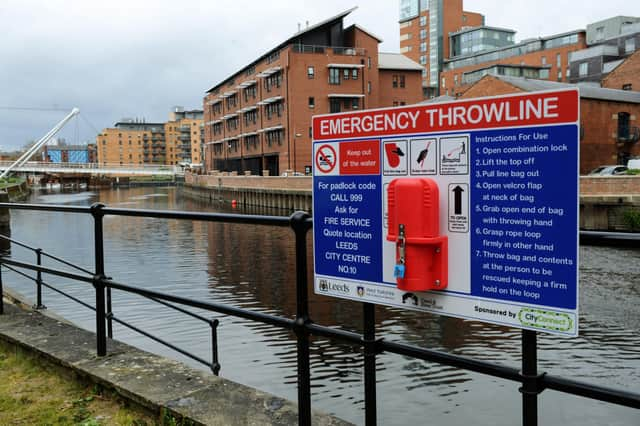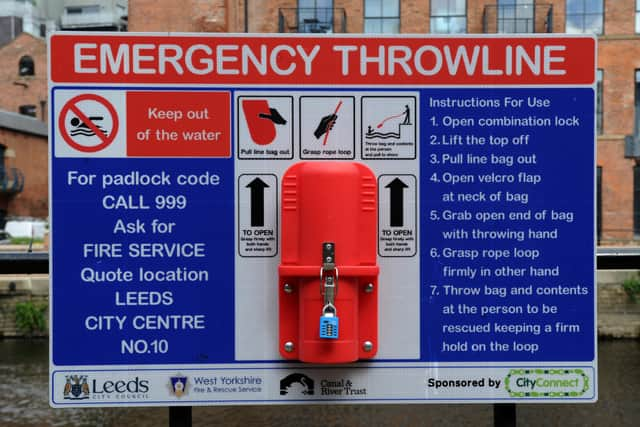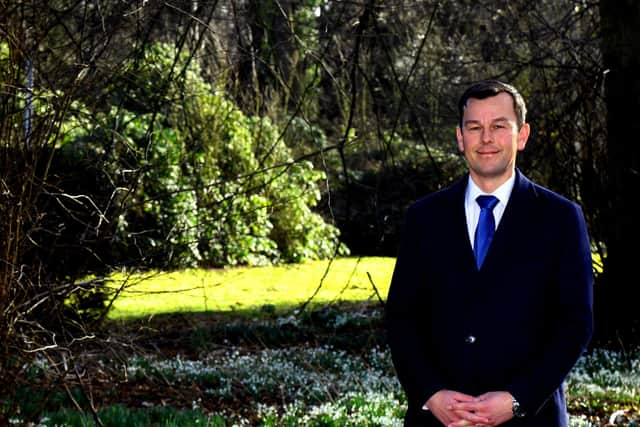Mark Allen’s drowning; the tragic water safety lessons – Nick Fletcher


The water where he and his friends had congregated (at Debdale Reservoir) was welcoming.
Like many young men, and some girls, they did not register the danger. Feeling hot and sticky, the clothes came off and in they went. I am pretty sure that if I had been there, aged 18, I would have done the same. I have swum in the sea a thousand times, so what it is the difference?
Advertisement
Hide AdAdvertisement
Hide AdIn they all went. No doubt, they screamed with laughter and pain when the cold hit them. They probably splashed each other in the water, like we all do. Apparently, these boys got out, but they decided to go back in.


Unfortunately, Mark never swam again. Last week I met Mark’s mum Leeanne – a brave woman who told me her story.
When someone dies so young, we have to ask why. It is a very tough question. When a family can take something positive out of such a tragic event, it does not remove the pain, but preventing others from going through the same experience may help to bring at least some sense to it.
Mark’s mum made a promise to him that she would do all she could to stop this happening to other people, so that families like hers do not have to suffer a similarly tragic event. The petition started by Leeanne has reached 103,000 signatures.
Advertisement
Hide AdAdvertisement
Hide AdThere has been similar campaign work on throwline stations and water safety education over the years, and I would like to recognise the work of those campaigners.


Hundreds of people die each year in water, and figures have shown that over the last eight years between 80 and 90 per cent of those who suffer fatalities in natural water have been male.
What is happening? It appears that boys and men are less risk-averse than girls, so that is the first point that needs addressing. The second point, which I believe to be the most important, is that many of the deaths are not down to poor swimming capabilities. Just because someone can swim, it does not make them safe; it is the shock of the cold water that kills so many.
It is not like jumping into a swimming pool, which is often heated. It is not like someone running into the sea and then running back out again until they get used to it. It is the jumping in that does it. The third point to raise is that there are no lifeguards to help anyone in trouble.
Advertisement
Hide AdAdvertisement
Hide AdSo what is the answer? This debate is about throwlines. Some people believe that having throwlines at all open water spaces could be the answer and would help an awful lot, but it is not completely the answer.
The problem is that if I saw safety equipment around a stretch of water, it might suggest to me that this is a safe place where I can go in. David Walker, of the Royal Society for the Prevention of Accidents – a professional in the field – said to me that when he sees this equipment, he is pretty sure that there has been an incident.
In other words, what shouts “safety” to me and many members of the public actually shouts “danger” to a professional.
Having spoken to David, I am convinced that there needs to be a three-pronged approach. Education must be the first part. A 20-minute session with every child once a year would be a wonderful start, and we must ensure that boys engage with the lessons. Secondly, mandatory risks assessments of all waters – natural or manmade – must be carried out.
Advertisement
Hide AdAdvertisement
Hide AdThe RoSPA will help with those, and although many of the larger water companies and councils already perform them, it appears that too many are just a paper exercise; they do not really carry out a thorough assessment or act fully on their findings, and that should be addressed.
Finally, equipment such as throwlines must be put in place only with sufficient warnings stating “This equipment is not a signal that the water is safe – far from it – and no matter how many times you have swum before, it could be your last”.
We will never stop young people doing risky things, since it is part of growing up. It is fun and makes us who we are. We learn from those actions: “That was a good thing to do”; “That was not so good”. I am a believer in taking risks, but those risks must be calculated. If our young people are not fully aware of the dangers, it is our job to correct that.
Nick Fletcher is Tory MP for Don Valley and led a Parliamentary debate on throwlines – this is an edited version.
Advertisement
Hide AdAdvertisement
Hide AdSupport The Yorkshire Post and become a subscriber today. Your subscription will help us to continue to bring quality news to the people of Yorkshire. In return, you’ll see fewer ads on site, get free access to our app, receive exclusive members-only offers and access to all premium content and columns. Click here to subscribe.
Comment Guidelines
National World encourages reader discussion on our stories. User feedback, insights and back-and-forth exchanges add a rich layer of context to reporting. Please review our Community Guidelines before commenting.